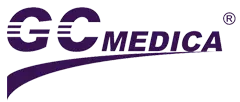-
Laparoscopic & Endoscopic Products
-
Laparoscopic Procedures
- Heated Insufflation Tube
- Laparoscopic Smoke Filter
- High FLow CO2 Laparoscopic Insufflation Filter Tube Set
- Veress Needle
- High Flow Heated Insufflation Tube
- Arthroscopy Irrigation Set
- Disposable Bladeless / Bladed Trocar with Thread / Balloon
- Disposable Wound Protector
- Disposable Height Changeable Wound Protector
- Retrieval Bag
- Laparoscopic Suction Irrigation Set
- Laparoscopic Insufflator
- Endoscopy Care and Accessories
-
Laparoscopic Procedures
- Respiratory & Anesthesia
- Cardiothoracic Surgery
- Gynaecology
-
Urology
- CathVantage™ Portable Hydrophilic Intermittent Catheter
-
Cysto/Bladder Irrigation Set
- M-easy Bladder Irrigation Set
- B-cylind Bladder Irrigation Set
- S-tur Bladder Irrigation Set
- S-uni Bladder Irrigation Set
- B-uro Bladder Irrigation Set
- Premi Bladder Irrigation Set
- J-pump Bladder Irrigation Set
- J-tur Bladder Irrigation Set
- H-pump Bladder Irrigation Set
- Sup-flow Bladder Irrigation Set
- Maple Irrigation Set
- Peony Irrigation Set
- Nelaton Catheter
- Urinary Drainage Bag
- Urinary Drainage Leg Bag
- Enema Kits
- Sitz Bath Kits
- Click Seal Specimen Container
- Silicone Male Catheter
- Spigot Catheter and Adaptor
- Sandalwood Irrigation Set
- Freesia Irrigation Set
- Daffodil Irrigation Set
- Single-Use Digital Flexible Ureteroscope
- Enteral Feeding Products
- Dental
- Fluid Management
- Warming Unit and Warming Blanket
-
Operating Room Necessities
- Nasal and Oral Sucker
- Disposable Medical Equipment Covers
- Magnetic Drape / Magnetic Instrument Mat
- Suction Handle
-
General Surgery
- Perfusion Atomizer System
- Gastric Sump Tube
- Surgical Hand Immobilizer / Lead Hand for Surgery
- Administration Set for Blood
- Ear/Ulcer Syringe
- Bulb Irrigation Syringe
- Toomey Irrigation Syringe
- Mixing Cannula
- Basin Liner/Basin Drape
- Medical Brush
- Sponge Stick
- Suture Retriever
- Needle Counter
- Disposable Calibration Tube
- Heparin Cap
- 100ML Bulb Irrigation Syringe
- Scleral Marker
- Surgical Light Handle
- Mucosal Atomization Device
- Durable Medical Equipment
- Patient Handling System
- PVC-FREE Medical Device
- Emergency
-
Patient Air Transfer Mattress Online WholesaleDec 17 , 2024
-
Cystoscopy Irrigation Set Online Wholesale | GCMEDICADec 17 , 2024
-
Patient Warming Device and Blanket Online wholesaleDec 16 , 2024
-
CathVantage™ Twist Intermittent Catheter | GCMEDICASep 20 , 2024
-
Single-Use Digital Flexible Ureteroscope | GCMEDICASep 20 , 2024
The Manufacturing Material and Lens Size of Goggles
Eye shield goggles are glasses worn during sports or work. They are mainly used to avoid eye injuries caused by splashes, chemicals, infectious body fluids (such as droplets, blood, etc.) and strong light.
1. Manufacturing materials of eye shield goggles
When this lens is manufactured, a part of metal oxides such as iron, cobalt, chromium, strontium, nickel, manganese, and some rare earth metal oxides such as and neodymium are added to the general optical glass formulation. These metal oxides enable glass to selectively absorb electromagnetic waves in a certain band of light, such as cerium and iron oxides, which can absorb a large amount of ultraviolet rays. The use of this glass lens can reduce the amount of certain wavelengths passing through the lens to reduce or prevent damage to the eyes. Different colors of anti fog goggles can absorb light of different colors. This kind of glasses is divided into two categories, one is absorption type and the other is reflective type. The former is used the most.
The lens pieces are generally round, and the specifications are expressed in terms of their diameter. The unit is mm. There are φ48, φ50, φ52, φ56, φ60, φ65, φ70 and other specifications. The most commonly used specifications are φ56, φ60 and φ65. Due to the popularity of large frames, the use of large-sized lenses such as φ70 has increased.
2. The lens size of eye shield goggles
The size and shape of the spectacle lenses that conform to the shape of the frame after processing the rough piece are naturally determined by the curve of the inner edge of the frame. The lens of anti fog goggles should indicate the horizontal direction and the nasal side, otherwise the lens of asymmetrical shape will become a completely different shape after being rotated.
The size of the lens is expressed by the length of the reference line and the height of the reference line (reference line method), that is, AA'×B'B, in mm (for example, 46×40); or by the horizontal and vertical dimensions of the circumscribed rectangle ( box method).
The shape of the lens is represented by the difference in the shape of the lens. The so-called sheet shape difference is the difference between the length of the reference line and the height of the reference line (reference line method), or the difference between the horizontal and vertical dimensions of the circumscribed rectangle (box method). The unspecified is the baseline method. For example, a 46×40 lens has a shape difference of 6 (ie 46-40). The different lens shapes of some lens series are expressed by the difference of lens shapes. If the shape difference is 3 or 4, it is a tall shape. If the shape difference is 10, it is a short shape. Early lenses are symmetrical - round or oval.
A round eye shield goggle lens has a shape difference of 0, a short oval 4, and a long oval 9. The semi-circle is connected under the semi-ellipse to become a "wide field of view ellipse". In addition, there are "contour", "square", "edgeless" and "motion" and so on. The change in lens shape is mainly caused by the continuous refurbishment of modern eyeglass frames. Frames with different datum line lengths (such as 40, 42, 44, 46) can have the same plate shape difference 4 (eg 40×36, 42×38, 44×40, 46×42). But they are not proportional to each other, so the shape of the slices is also different.

